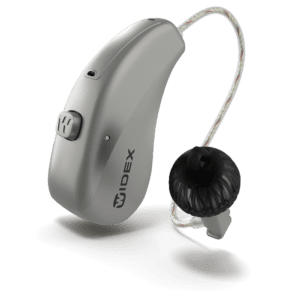Exploring the Wonders of Hearing
Hearing is a complex and remarkable sense that allows us to connect with the world around us. It’s not just about perceiving sound but also understanding the nuances, patterns, and emotional depths that come with it. Hearing science delves deep into the mechanics of hearing, studying the intricate processes that enable us to experience the auditory world. In this blog, we will explore the wonders of hearing, uncovering the fascinating aspects of how we perceive and interpret sound. We will also cover why hearing matters so much.
The Auditory System
Before delving into hearing science and why hearing matters so much, it’s crucial to understand the fundamentals of the auditory system. The human ear can be divided into three main parts: the outer ear, the middle ear, and the inner ear.
Outer Ear: Sound waves are collected and funneled into the ear canal by the pinna, the visible part of the ear. The sound waves travel down the ear canal and strike the eardrum.
Middle Ear: The eardrum vibrates when it’s struck by sound waves, and this vibration is transmitted to three tiny bones in the middle ear called the ossicles. These bones amplify the vibrations and transmit them to the inner ear.
Inner Ear: The inner ear houses the cochlea, a spiral-shaped structure filled with fluid and lined with thousands of tiny hair cells. These hair cells are responsible for converting mechanical vibrations into electrical signals that can be interpreted by the brain.
Audiological testing or a Hearing Test
Audiological tones are pure, controlled sound frequencies used in hearing tests and assessments to measure an individual’s hearing abilities. Specialized equipment like audiometers typically generates these tones. They are essential tools in audiological practice because they allow clinicians to determine the thresholds at which an individual can hear different frequencies.
The audiologist presents these tones at varying frequencies and volumes to assess the sensitivity of an individual’s hearing. Thus, by carefully measuring the responses to different tones, they can create an audiogram, which is a visual representation of an individual’s hearing ability. This information helps audiologists diagnose hearing loss, its type, and degree.
Hearing Tests Aren’t the Ultimate Tool for Deciphering Performance in Noisy Environments: Here’s Why
While hearing tests, often conducted by audiologists, are valuable tools for assessing an individual’s hearing sensitivity and diagnosing hearing they have limitations when it comes to predicting how well someone will perform in noisy environments. Here are some reasons why hearing tests are not the ultimate tool for deciphering performance in such settings:
Hearing Tests Focus on Pure Tones:
Traditional hearing tests typically involve presenting pure tones at various frequencies and volumes to assess an individual’s hearing thresholds. These tests are excellent for measuring the sensitivity of the auditory system to specific frequencies but do not replicate the complex and dynamic nature of real-world sounds, especially in noisy environments.
Real-World Sounds Are Complex:
Complex auditory information, including speech, background noise, echoes, and reverberation, fills noisy environments. Hearing tests do not account for the interactions and overlapping of these various acoustic elements. In real life, it’s often the ability to separate and process different sounds that determines communication success in noisy settings.
Cognitive and Auditory Processing:
Success in noisy environments depends not only on hearing sensitivity but also on cognitive and auditory processing skills. These skills include selective attention, working memory, and the brain’s ability to filter out unwanted noise while focusing on important information. Hearing tests do not evaluate these cognitive and auditory processing abilities.
Listening Effort:
In noisy environments, individuals often need to exert more effort to understand and follow conversations. This listening effort can be physically and mentally draining, even for individuals with normal hearing. Hearing tests do not measure or account for the additional cognitive load that noisy environments impose.
Speech Recognition:
Hearing tests typically assess the ability to hear pure tones and may include speech recognition tests in quiet conditions. However, understanding speech in noisy settings is a different challenge altogether. Background noise and other acoustic factors can significantly affect speech intelligibility, making it a distinct aspect that hearing tests do not fully address.
Personal Factors:
Each individual’s experience in noisy environments can be highly subjective and influenced by personal factors such as prior exposure to noise, language skills, and motivation to communicate effectively. Standard hearing tests do not take these personal factors into account.
Technology and Assistive Devices:
In noisy environments, technology and assistive devices, such as hearing aids and cochlear implants, can play a significant role in improving communication. Hearing tests alone do not provide information about how well someone might benefit from or adapt to these technologies.
Real-Life Challenges:
Noisy environments pose various challenges, including rapid changes in sound levels, multiple conversations, and competing auditory sources. Hearing tests cannot replicate these complex and unpredictable situations.
The Pitch and Loudness of Sound
When we talk about hearing science, we often refer to two key attributes: pitch and loudness.
1. Pitch: Pitch is associated with the frequency of a sound wave, measured in Hertz (Hz). Lower frequencies create lower-pitched sounds, like the rumble of thunder or a deep voice, while higher frequencies result in higher-pitched sounds, such as bird songs or a whistle. Our ears can typically hear frequencies in the range of 20 Hz to 20,000 Hz.
The frequencies that are most important for understanding speech are typically found in the range of 250 Hz to 4,000 Hz. This frequency range is often referred to as the speech frequency range or voice frequency range. It encompasses the fundamental frequencies of most human speech sounds, including vowels and many consonants. The critical consonant sounds, such as “s,” “f,” and “th,” often have their higher-frequency components within this range. Therefore, these frequencies are essential for the clarity and intelligibility of speech.
2. Loudness: Loudness, on the other hand, is a measure of the amplitude or intensity of sound waves. It is measured in decibels (dB). Quieter sounds have lower dB levels, while louder sounds have higher dB levels. Our ears are sensitive to a wide range of loudness levels, from the faintest whispers to the roar of a jet engine.
Hearing and Emotional Connection
Hearing is not just about the mechanical processing of sound; it’s deeply tied to our emotions and memories. The tones and melodies we hear can evoke a wide range of feelings, from joy to sadness, and they often trigger vivid memories. Audiological science seeks to understand how our brains process and connect these emotional and sensory aspects of hearing and relate them to why hearing matters.
Hearing Matters: Understanding the Importance of Our Auditory Sense
Hearing is one of our most vital senses, playing a crucial role in our daily lives and overall well-being. It’s not just about perceiving sound; it profoundly impacts our communication, safety, emotional experiences, and overall quality of life. Here are some key reasons why hearing matters:
Communication:
Hearing is at the core of human communication. It enables us to connect with others through spoken words, tone of voice, and non-verbal cues. Effective communication is essential for building relationships, sharing information, expressing emotions, and collaborating with others. Hearing impairment can hinder these vital interactions, leading to isolation and frustration.
Safety:
Our ability to hear warning signals, sirens, horns, and other auditory cues is essential for our safety. In everyday life, it helps us detect approaching vehicles, alarms, and potential hazards. For individuals who are deaf or hard of hearing, these safety warnings may be inaccessible, making them more vulnerable in certain situations.
Emotional Well-Being:
Hearing profoundly affects our emotional experiences. The joy of listening to music, the comfort of a loved one’s voice, and the laughter of friends all contribute to our emotional well-being. Hearing loss can lead to feelings of sadness, social isolation, and even depression, as it limits one’s ability to engage in these emotionally enriching experiences.
Cognitive Function:
Recent research has shown a strong link between hearing health and cognitive function. Untreated hearing loss has been associated with cognitive decline, including conditions like dementia and Alzheimer’s disease. The brain relies on auditory input to stay active and engaged, making hearing health a crucial factor in maintaining cognitive abilities.
Learning and Education:
For children, hearing is vital for language development and learning. The ability to hear and understand spoken language is essential for acquiring new knowledge and skills. Children with hearing impairments may face challenges in school, which, consequently, can impact their academic and social development.
Employment and Economic Well-Being:
Many professions and job roles require good hearing. From customer service to emergency responders, the ability to hear is essential for effective job performance. Hearing loss can limit career opportunities and earning potential, which can, in turn, affect one’s economic well-being.
Quality of Life:
Hearing significantly contributes to our overall quality of life. The ability to enjoy music, participate in social activities, and engage in conversations enriches our daily experiences. Hearing loss can diminish these pleasures and lead to a decreased quality of life.
Independence:
Hearing allows us to navigate the world independently. It helps us to be aware of our surroundings, communicate with others, and make decisions based on auditory information. For individuals with hearing loss, assistive devices like hearing aids and cochlear implants can help them regain a sense of independence.
Mental Health:
Hearing impairment can have a profound impact on mental health. The social isolation and communication difficulties that often accompany hearing loss can lead to feelings of anxiety and depression. Seeking treatment for hearing loss, such as hearing aids or cochlear implants, can improve mental well-being.
Hearing Matters!
Our exploration of the wonders of hearing and why it matters has revealed the intricate and remarkable nature of our auditory sense. Hearing is not merely the reception of sound; it’s a multifaceted experience that enriches our lives in countless ways. Our auditory system, comprising the outer ear, middle ear, and inner ear, forms the foundation for this sensory marvel, allowing us to perceive and interpret the world around us.
Audiological science and hearing tests are indispensable tools for diagnosing hearing impairments and understanding hearing sensitivity. They provide valuable insights into our ability to hear pure tones, but they have their limitations, especially when it comes to predicting performance in noisy environments. The complexity of real-world sounds, cognitive processing, listening effort, and personal factors all contribute to our auditory experiences, which cannot be fully captured by standard hearing tests.
The importance of hearing, however, cannot be overstated. It affects our communication, safety, emotional well-being, cognitive function, learning, economic well-being, and overall quality of life. It is a cornerstone of our independence, allowing us to navigate the world, connect with others, and make informed decisions. Moreover, it plays a significant role in our mental health and emotional fulfillment.
Therefore, understanding and preserving our hearing health should be a priority. Regular hearing check-ups, early intervention when hearing issues arise, and the use of assistive devices when needed are all steps toward ensuring that hearing remains a valuable and integral part of our lives. Hearing is not just a sense; it is a gateway to our world, enriching our experiences and connecting us with others in ways that are both remarkable and essential.
Thanks for reading, listening and hearing what we share!









